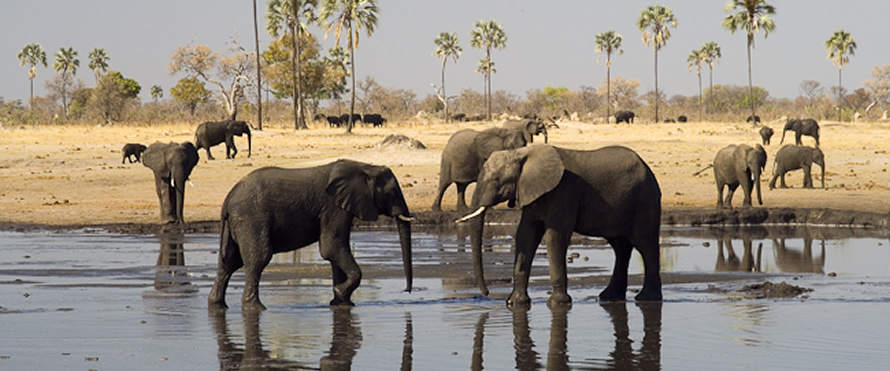
The Sunday News

 Mahlabezulu Zulu
Mahlabezulu Zulu
STAYING in communal areas bordering Hwange National Park or any other national park or forestry area, gives one a clearly defined picture of what is human and wildlife conflict. Having operated a programme meant to resolve such an issue in communities bordering the biggest national park in Zimbabwe; Hwange National Park, I have met both sad and fascinating incidents in communities such as Mabale, Magoli, Gwaai, Lupote, Dibudibu and Tsholotsho areas.
Some incidents are depressing because they have resulted in loss of human life while some have led to poverty of community members through the loss of livestock occasioned by attacks from lions, hyenas, leopards and other predators.
On the other hand, other incidents raise interest because they have led to moulding of certain unusual behaviours of both wild animals and human beings.
It is not an overstatement to say that all communities are fighting losing battles with elephants and baboons especially during the cropping season. Most villagers in these areas have to guard their fields from the wild right round the clock.
In the afternoon they guard their fields from baboons using catapults and dogs while in the evenings they monitor the movement of elephants which trespass into fields and have to scare them off by beating drums or making fire along field boundaries.
One particular incident I witnessed was when I visited Dibudibu area, a place where human behaviour has been changed by elephants.
Dubidubu is one of the communities which are close to a forestry area in Tsholotsho District.
The area is frequented by both elephants and hyenas.
On my first drive through Dibudibu area using a wildlife research vehicle on my maiden familiarisation tour with villages and surrounding forestry area; I found a herd of about 400 cattle and quite a big number of goats and donkeys being herded by seven herders.
My first sight of such a scenario came as a surprise considering that it happened in the month of May when most of the villagers would have harvested their crops and livestock is allowed to graze freely in the field on remaining maize stalks, water melons and cucumbers.
After asking about this group herding practice in this area, one of the villagers in the area told me that it was peasant farming’s common practice throughout the year.
The reason for such practice is that when villagers allow their livestock to graze freely in such grazing areas, which in most cases are in the bordering forestry areas, they sometimes come across a herd of elephants from the neighbouring Fuller Forestry and they graze together.
While this association does not pose any threat to either of the species of the animals during their grazing the main challenge is when the herder wants to collect his livestock at the end of the day for overnight safe keeping at home.
Wild elephants always do not compromise with human beings walking as compared to those who are in a vehicle. Consequently, herders face a challenge of collecting their livestock in such situations. Hence, Dibudibu villagers have resorted to monitoring their livestock during their grazing.
Hyenas are some of the predators which are difficult to control if they are part of the wild animals which prowl and kill community livestock.
The fact that they are nocturnal animals and are scavengers makes it difficult to trap or control them.
In Dibudibu it has become a norm that any livestock left outside the kraal overnight falls prey to hyenas, the villages in the area have become feeding ground for the ever increasing population of hyenas.
One villager from the area, Sihlobo Ncube, said, “. . . all villagers around here do not waste their time looking for a beast which was out of the kraal overnight for one reason or another. They know that hyenas won’t give the owner the chance to see it alive again. This area has become the normal feeding ground for hyenas.”
Communities bordering Hwange National Park — Ngamo, Dopota, Mabale, Magoli, Chezhou and Lupote areas which are under Chief Nelukoba and Nekatambe and communities under Chief Matupula area in Tsholotsho namely Ngamo, Sipepa, Mlevu, Ziga, Kapane, Dlamini and Zandile — have not been spared from the devastating effects of lions which leave the national park to the communities.
Lions, like any other wild animal, are territorial. That means whenever the number of lions increases in the park more territorial space will be required to cater for the new pride, especially males.
Male lions have suffered the worst consequences in this territorial declaration by these coalitions as they try to form some new coalition with their female counterparts.
Male lions which have difficulties in getting new territories also have difficulties in finding prey eventually this leads them into finding alternative places for survival like neighbouring rural, communal areas.
Lions which move to such communal areas normally find easy prey, village livestock like cattle, goats and donkeys.
Domestic animals are easy prey because of lack of advanced censorship like species of wild animals which have good eyesight and good sense of smell that will effortlessly sense deadly predators such as lions, cheetahs or leopards.
This has led to pronounced human and wildlife conflicts as some community members have opted for retaliatory killing to try and resolve the issue.
Unlike other human beings problems, crafting finding solution to human and wildlife conflict seems to be as difficult as rebuilding the Great Zimbabwe. The big questions are: Who is supposed to find the solution? Are human beings playing their role in trying to solve the problem? Who is supposed to compensate the community members. Food for thought!
Mahlabezulu Zulu is a conservationist who has worked for various research and wildlife conservations around Hwange National Park. He can be contacted on: 0776196171 or [email protected]



